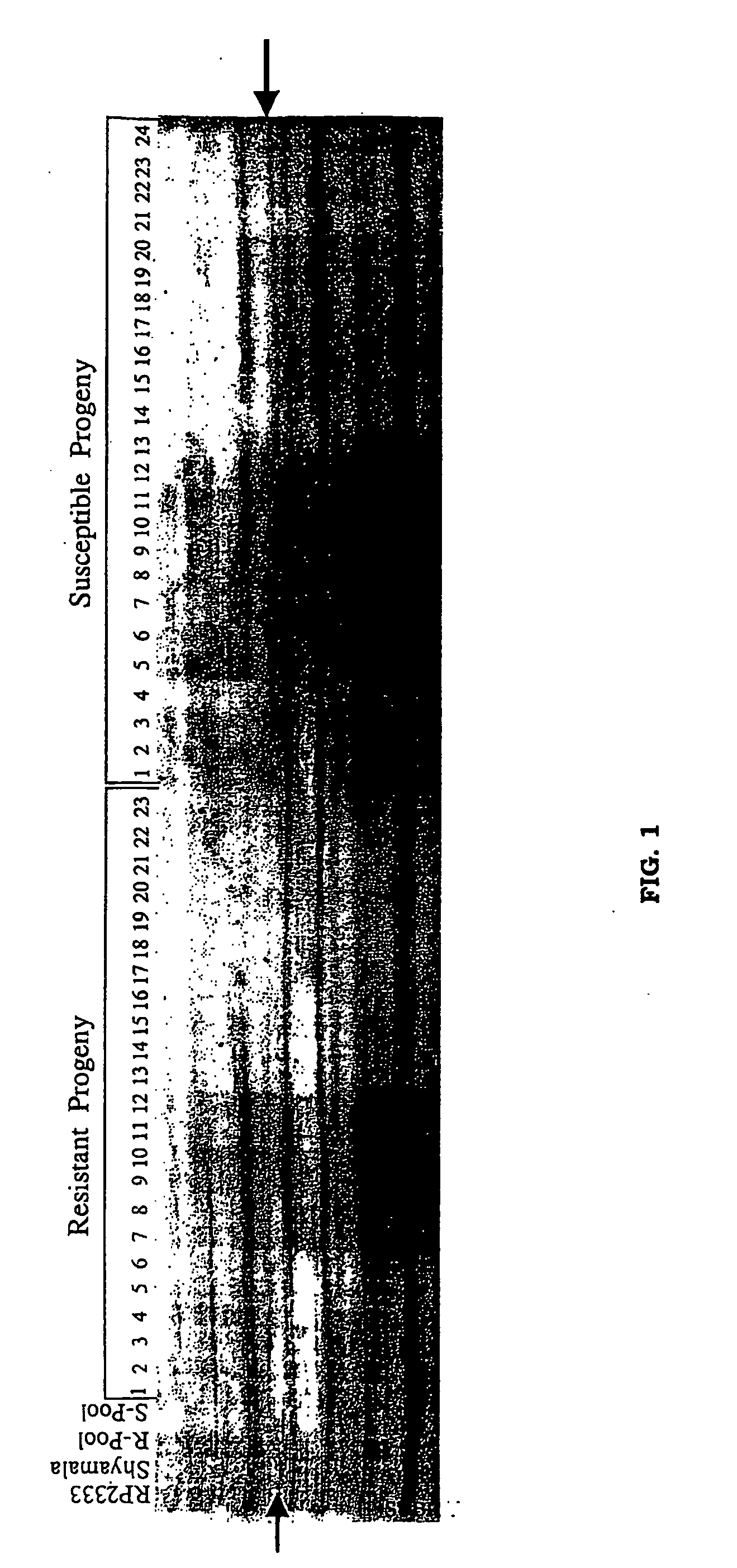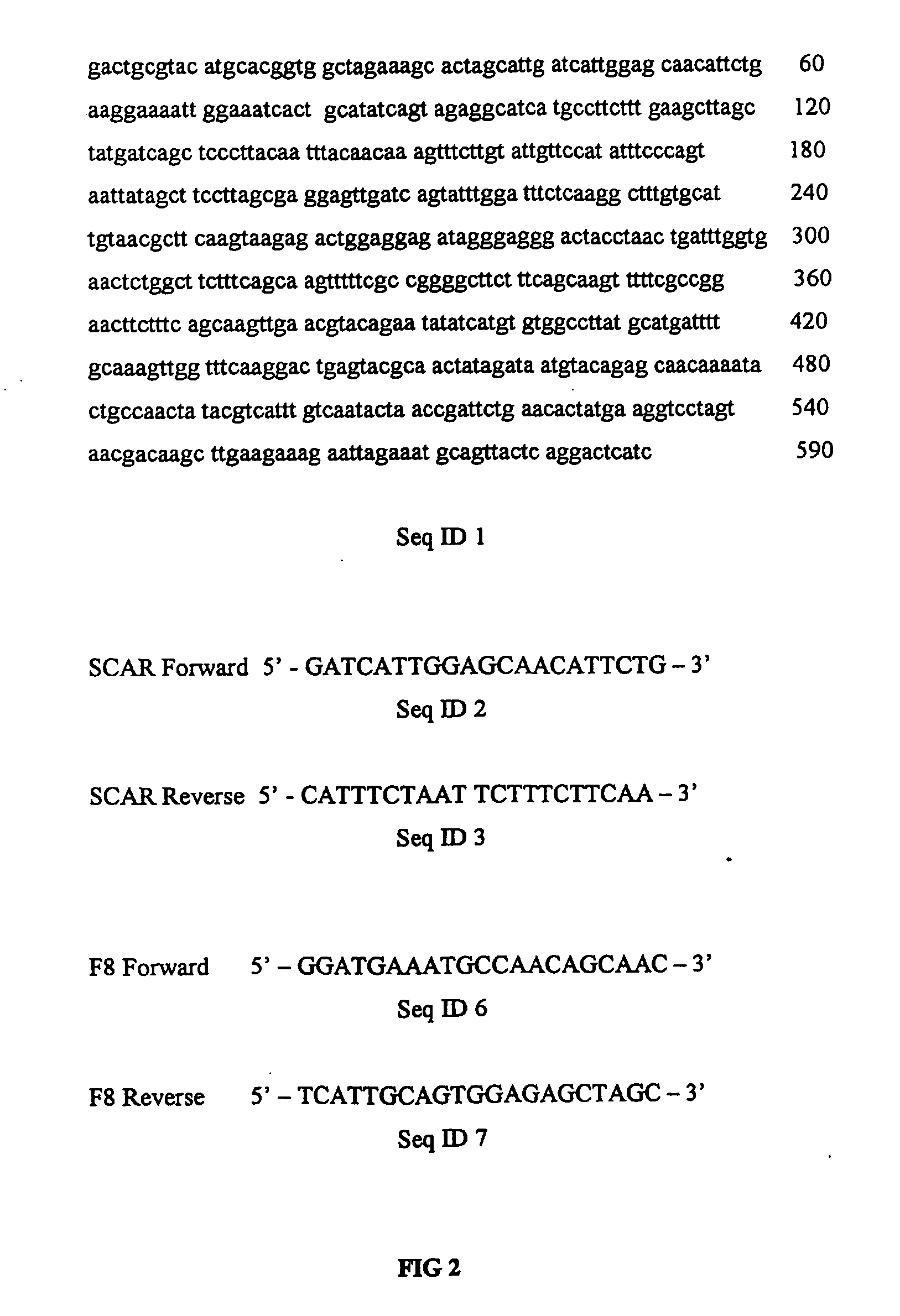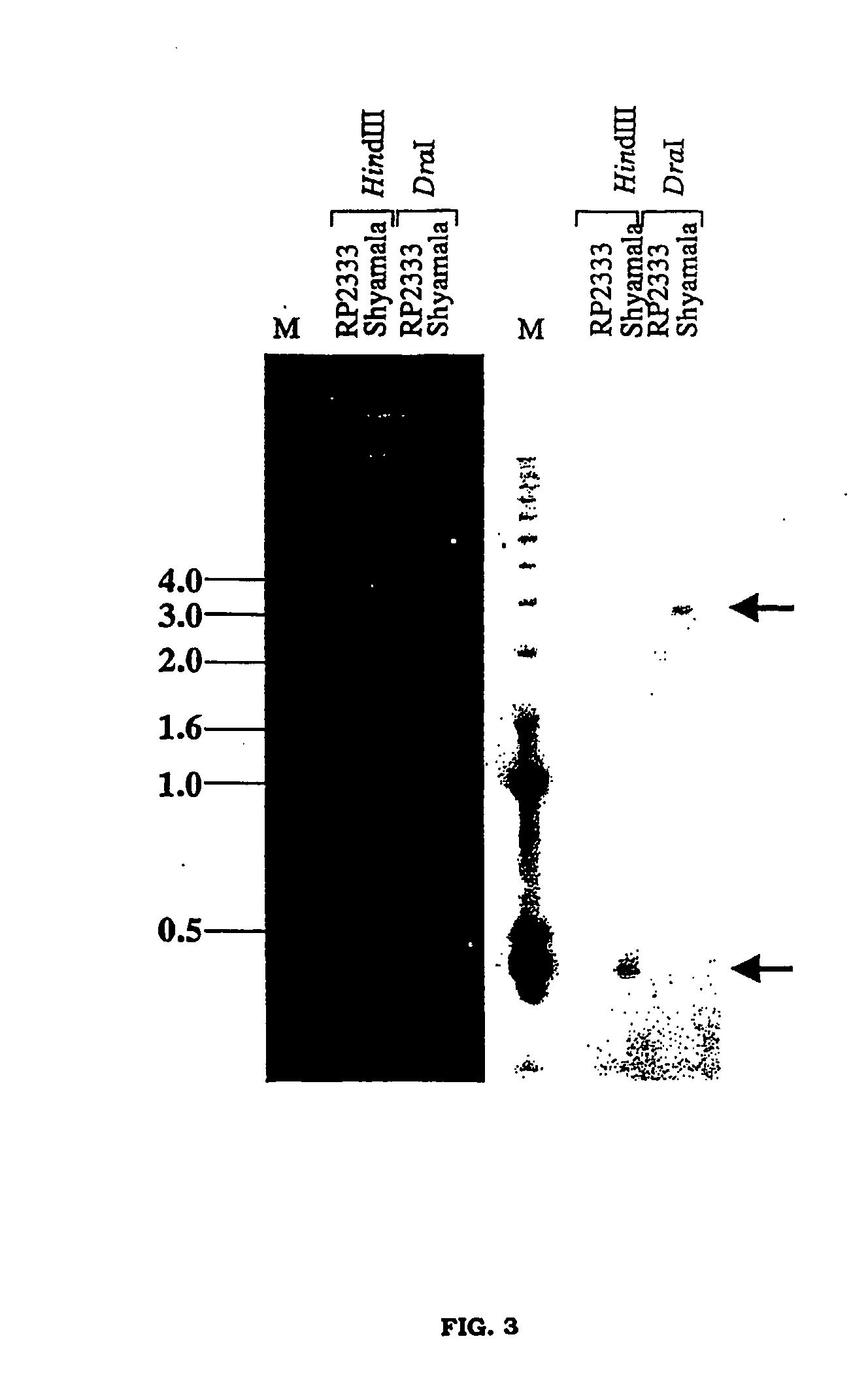Fine mapping and application of dna markers linked to a gall midge resistance gene for marker-aided selection in rice
a technology of dna markers and resistance genes, which is applied in the field of dna markers linked to a gall midge resistance gene for marker-aided selection in rice, can solve the problems of slowing down the process of breeding new gall midges and not being morphologically possibl
- Summary
- Abstract
- Description
- Claims
- Application Information
AI Technical Summary
Benefits of technology
Problems solved by technology
Method used
Image
Examples
Embodiment Construction
[0019] The present invention will now be described in greater detail with reference to the accompanying drawings in which:
[0020]FIG. 1 shows a AFLP fragment segregating with the susceptible phenotypes using primer combination shown in Seq ID # 4 and Seq ID # 5 respectively, i.e., P-CG (5′ GACTGCGTACATGCACG 3′) AND M-CTG (5′ GATGAGTCCTGAGTAACTG 3′).
[0021]FIG. 2A discloses the complete nucleotide sequence of the susceptible-specific AFLP marker, SA 598, identified in the present invention.
[0022]FIG. 2B shows the sequence of SCAR primers (forward and reverse) designed after sequencing the susceptible-specific marker SA598 and sequence of the F8 primers.
[0023]FIG. 3 shows Gel and Southern hybridization of HindIII and DraI digested DNA of RP 2333 and Shyamala probed with SA598.
[0024]FIG. 4 depicts the PCR-based screening for gall midge-resistant and susceptible progeny in F % population derived from a cross between RP 2333 and Shyamala using the susceptible phenotype-specific SCAR p...
PUM
| Property | Measurement | Unit |
|---|---|---|
| concentration | aaaaa | aaaaa |
| volume | aaaaa | aaaaa |
| concentration | aaaaa | aaaaa |
Abstract
Description
Claims
Application Information
 Login to View More
Login to View More - R&D
- Intellectual Property
- Life Sciences
- Materials
- Tech Scout
- Unparalleled Data Quality
- Higher Quality Content
- 60% Fewer Hallucinations
Browse by: Latest US Patents, China's latest patents, Technical Efficacy Thesaurus, Application Domain, Technology Topic, Popular Technical Reports.
© 2025 PatSnap. All rights reserved.Legal|Privacy policy|Modern Slavery Act Transparency Statement|Sitemap|About US| Contact US: help@patsnap.com



